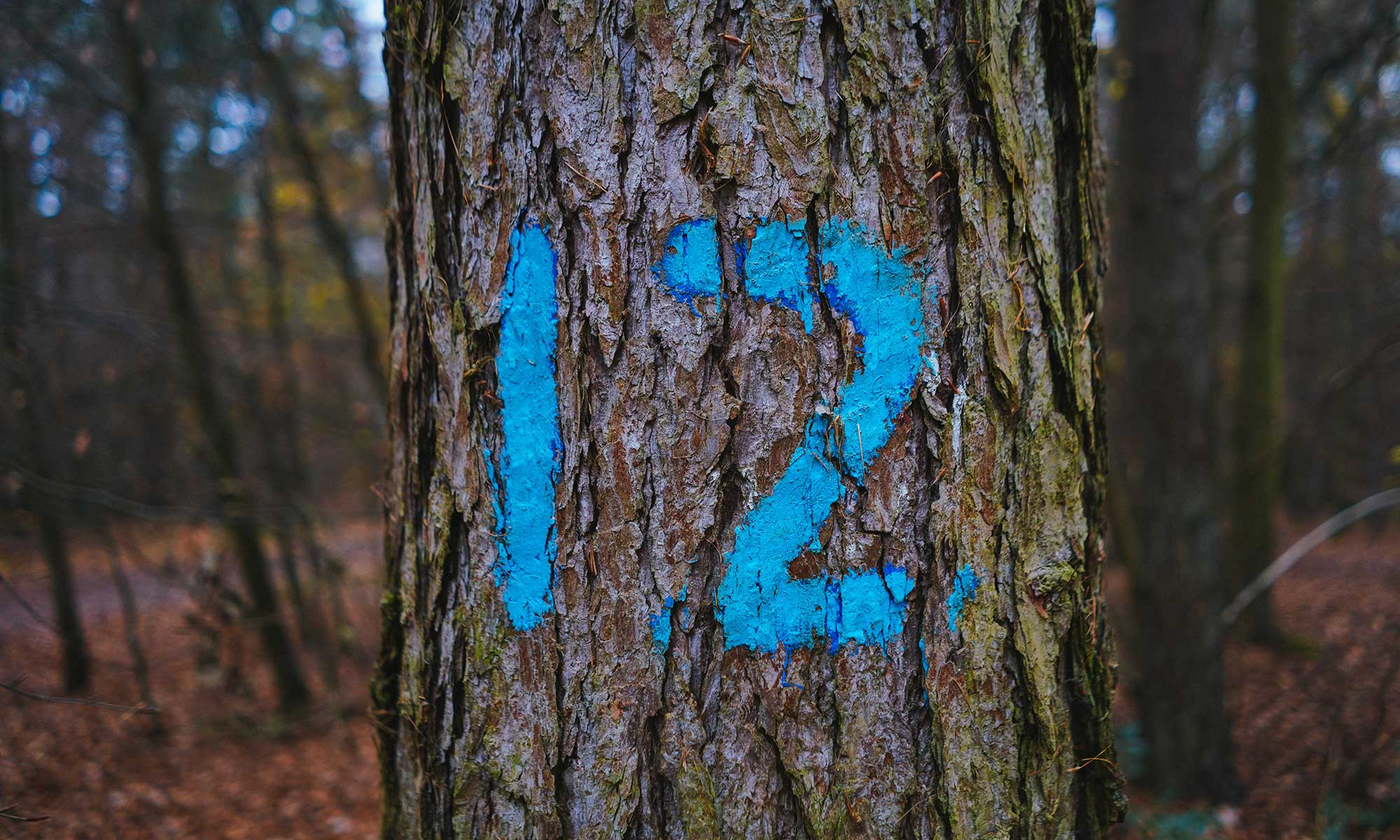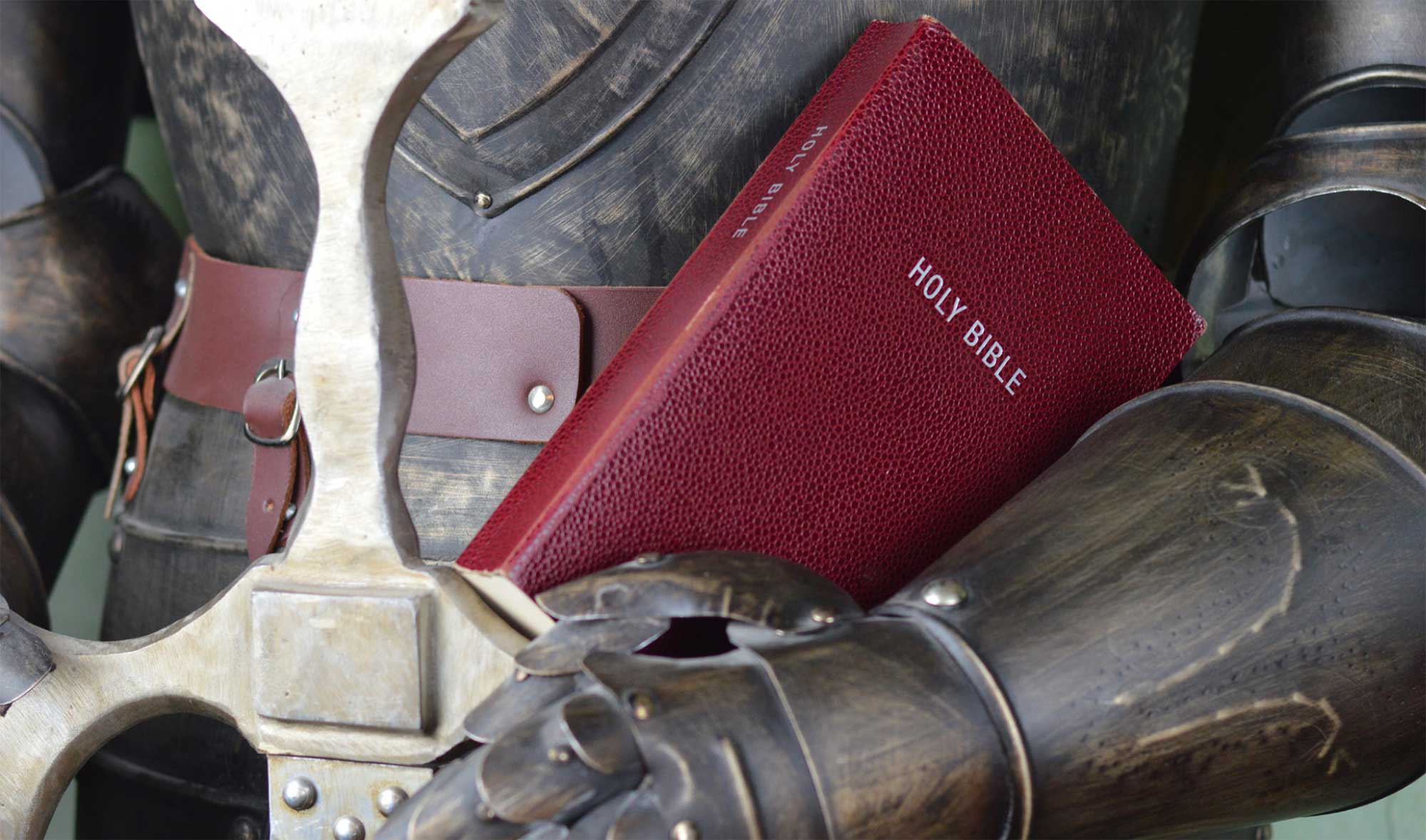
Revelation Hope –The 144,000 & The Great Multitude
The setting for Revelation 7 appears in the last verse of Chapter 6:
“For the great day of their wrath has come, and who can stand?” (See Revelation 6:17)
In answering this question, Revelation 7 contains a wonderful promise of encouragement for God’s people being able to “stand.”
There are two parts to this chapter:
• The 144,000 are sealed as a way of protecting them during the great tribulation.
•A great multitude which has passed through the great tribulation comes into the presence of God’s throne.
Let’s begin to decode what is portrayed here
The four corners of the earth signify worldwide impact.
Wind is used to represent trouble, war and bloodshed.
These verses indicate destructive forces being used as agents of God, similar to imagery that is often used in the Old Testament. (Jeremiah 49:35-37)
For now, destruction is being “held back” by the four angels.
Everyone—both good and bad—continue to survive in this world because God wants to protect His people.
During the great tribulation, we will see that the wicked are angry with God’s people.
But they fail to realise they owe their protection from destructive forces to the presence of God’s people in this world.
The Big Picture
In a spiritual sense, every believer in Christ is subject to both the blessings and curses of the covenant.
The blessings are the promise of a place in the New Jerusalem; the curses are signalled by the arrival of the horsemen.
These are God’s warning to try and win us back. If we resist, the end result will be spiritual death brought by the pale horse.
Next, as with Israel, God turns His attention to those oppressing His people.
In breaking the fifth seal, there is a call for justice from the oppressed of all the ages.
They are pictured as souls under the altar having been offered in sacrifice, crying out to God for justice.
The breaking of the sixth seal shows the return of Jesus to this world.
When wicked people flee, calling on the mountains and rocks to fall on them, the question is asked:
“Who shall be able to stand?”

Old Testament Imagery in the New Testament
The literal translation “from the rising of the sun” is a way of designating the east.
East is usually associated with God and His work.
East means “from God.”
The Bible contains many examples where east implies things to do with God:
• Eden was in the east (see Genesis 2:8).
• Ezekiel saw that from the east, the glory of God came to the temple (see Ezekiel 43:2).
• The magi followed a star in the east (see Matthew 2:2).
• Zechariah, father of John the Baptist, called Jesus the “sunrise.” (see Luke 1:76- 79).
• Jesus is called the “morning star,” which is visible in the east (see Revelation 22:16).
• Jesus said the sign of the Son of Man returning would appear in the east (see Matthew 24:27-30).
• The coming of Jesus and His followers to fight Armageddon is described as the Kings from the East (see Revelation 16:12).

What is this Final Sealing?
Read Revelation 9:4
In this verse, the fifth trumpet announces terrible things are happening but harm only comes to those who are not sealed on their foreheads.
This is an important sealing.
The words associated with sealing have multiple meanings in the New Testament.
First, we can seal a document to protect it from tampering.
We can do the same with stone on a tomb, or with locks on a prison cell.
When we seal a document or a place, we conceal something or someone.
Examples in the Bible include the tomb of Jesus (see Matthew 27:66); the heavenly scroll (see Revelation 5); and Satan’s confinement in the abyss (see Revelation 20:3).
Second, sealing can certify that something or someone is authentic and reliable.
Certified letters with a seal indicate the information inside is trustworthy, or has been delivered without being tampered (compare John 3:33 and 6:27; Romans 15:28; 1 Corinthians 9:2).
Third, sealing can indicate God’s acceptance of someone.
The Lord knows who belongs to Him and gives them the Holy Spirit (see 2 Timothy 2:19; 2 Corinthians 1:22; Ephesians 3:1 and 4:30).
So we can see sealing denotes identification of those who are God’s people in the New Testament (see Ephesians 1:13, 14).
Being sealed by the Holy Spirit is the sign of a genuine Christian.
Therefore, sealing became associated with circumcision in the first century (see Romans 4:11) and baptism in the second century.

The Seal of God is on the Forehead.
Sealing is expressed differently in Revelation 14:1, where the same people who are sealed—144,000 in number—are described as having their father’s name written on their forehead.
From this we can understand being “sealed on the forehead” is another way of saying God’s people are committed to Him in mind and character.
Once committed, they will reflect more and more of His image in their lives.
The sealing described in Revelation 7 occurs just before the end.
From John’s point of view, this sealing involves how people relate to God at the end time.
The New Testament does not limit the concept of sealing to that period but in Revelation 7, a sealing occurs within an end-time setting.
The final proclamation of the gospel results in a great last- day sealing work.
Sealing God’s people has gone on all throughout history but it reaches a climax at the end time, when a time of testing shows who belongs to God.
Testing is always appropriate to the times. We will see how this test is applied when we come to the final showdown in Revelation 13:15-17.
Taking Sides for the Great Battle
At the end time in Revelation, the mark of the beast and the seal of God are used in contrast to show who is on God’s side and who is on the side of “Babylon”—the anti-Christian powers.
To discover what one is provides the clue to finding the other.
Sealing has always been happening in the lives of God’s people.
Ephesians 1:13, 14 tells us this is the work of the Holy Spirit.
But at the end of earth’s history, there will be a special testing time to sort out who belongs to God and who belongs to Babylon.
Ezekiel 9:1-5 provides an important Old Testament background to understand the sealing described in Revelation 7.
In those times, a mark on the person’s forehead gave protection during a cleansing of the city by slaughter
– It was a way of showing they were faithful to God.
Having a “seal on the forehead” means those people who receive it are protected because they really are God’s people.

So who are the People Described in Revelation 7:4-8?
In verse 4, John hears the number 144,000 from all the tribes—the people on God’s side at the end time.
By contrast, their opponents in Revelation 9:16 numbered 200 million. With such odds, the situation does not seem to be fair.
Obviously, these numbers are not to be taken literally. We are dealing with symbols.
Some people have tried to apply this number literally.
They say these people are really 144,000 Jews but there are some serious problems with this approach.
To understand what is being said here, we need to go back to the Old Testament and look at some background.
After the death of Solomon, the 12 tribes of Israel were split into two nations: 10 northern tribes called Israel and two southern tribes called Judah.
The 10 northern tribes were taken into captivity (see 2 Kings 17:5-41). There, they amalgamated with other nations.
The two southern tribes were taken captive into Babylon.
Later, they returned to Jerusalem when Babylon fell.
They are known as Israel and Judah, or Jews by New Testament writers.
There is now only one nation, not two, as was prophesied in Ezekiel 37:15-23 and confirmed by New Testament writers (see Romans 11:1).
The Temple records were destroyed in 70 AD during the destruction of Jerusalem and many modern Jews are descended from converts in Europe during the Middle Ages.
The list of tribes given in Revelation is different to any other in the Bible.
There are some tribes missing, while others have been added to the list.
Joseph received a double portion of inheritance—his sons Manasseh and Ephraim became the head of tribes in Israel.
This resulted in there being 13 tribes but 12 are always listed because Levi is never given an inheritance.
They took care of the things of God and did not require land.
But the list in Revelation 7 has Dan and Ephraim omitted while Joseph and Levi are included.
Numbers in Revelation have symbolic meaning and 12 is 16 the kingdom number (see Revelation 21:10-17).

We have seen in the New Testament how the true nation of Israel—spiritually speaking—consists of the followers of Jesus (see Galatians 3:26-29; Romans 2:28, 29; James 1:1).
Therefore, the 12,000 from each of the 12 tribes listed in Revelation 7:5-8 (equalling 144,000) is simply a symbolic way of describing the true followers of Christ.
This is in harmony with the principles established earlier of how Revelation uses the language of Old Testament experiences concerning Israel to illustrate what is happening to Christians in the New Testament.
The language of war is used to describe he 144,000.
They are organised in a similar way to the battle-ready tribes of Israel, as recorded in Numbers 31:3-5.
Each tribe has 12 military units of 1,000 soldiers, a total of 12,000 soldiers. With 12,000 from each tribe, this gives a total of 144,000.
They are ready to go out to battle with 200 million.

Remember, all of this is speaking symbolically.
When John hears the number 144,000 (Revelation 7:4) and 200 million (Revelation 9:16), both are mentioned in connection with four angels (see Revelation 7:2, 3 and 9:15).
This is the only instance in Revelation where we have exact imagery used in this manner.
In a sense, these end-time people represent all of God’s people throughout the ages who have been engaged in spiritual war and been sealed, which is the totality of Israel with all its tribes and sub-groups.
Here we are shown the final representatives who will face the great tribulation.
We also find the 144,000, mentioned later in Revelation 14:1-5, standing on Mt Zion.
Again, it is obvious symbols are being used because Mt Zion is only about the size of a football field.
They follow the Lamb everywhere as His special companions (see Revelation 14:4).
This suggests their experience, in many respects, probably resembles what the Lamb experienced.
When we get closer to looking at the final tribulation, we will see how much the experience of the followers of Jesus resembles the passion week of Christ.
As the world treated Jesus, so they will treat His followers.
More of this is revealed when we come to Revelation 13:11-17.
Doing Daily Battle in their Lives
Those who are true believers do battle with the beast and its image.
They follow Christ but at a cost, which may even be with their lives.
But they are ready for battle here: they are like an army.
The weapons being used to overcome the enemy in this battle are the testimony born by the lives they live (see Revelation 12:11).
According to Revelation 14:4, this group have not defiled themselves with women they kept themselves pure.
Again, using symbolism, this is a connection with Old Testament language: just before battle, David’s troops would not go near women.
As we look at the characteristics of the tribes represented in Revelation, we understand they are just ordinary people with certain strengths and weaknesses.
But in Christ, they will be invincible.

So long as the true believers trust in the Lamb, His victory is their victory.
The battle within the Christian life is to keep hold of the Lamb (see Revelation 16:15).
This places the gospel at the centre of the last great conflict

• The 144,000 are not the first to be persecuted.
• They are not the first to be sealed.
• They are not the first to be without fault before the throne.
• Although an end-time people they do in many respects represent the faithful of all ages.
All generations of God’s people have one thing in common: they all need the grace and mercy of God
(see Ephesians 2:8, 9).
The Great Multitudes in White Robes
Read Revelation 6:1, 2
In these verses, we find the 144,000 are now called a great multitude that no-one can count, who have come out of the great tribulation.
They are standing before the Lamb at the throne of God, celebrating the Feast of Tabernacles.
This feast was first celebrated by the Israelites when they came to the Promised Land.
It was to remind them that they once wandered the desert in tents but now, they were home.
The celebration of this feast in Jerusalem was by living in booths and waving palm branches.
So it is in Revelation 7, the true followers of Jesus are in their “Promised Land”—standing before the throne and worshipping God, wearing white robes and holding palm branches in their hands.
What we have in these verses is John using a literary device to describe the same people with two different symbols.
Similar to a mirror image, the person is the same but the reflection is not real.
Consider how John uses this technique elsewhere in Revelation:
- Revelation 1:10 John hears a voice like a trumpet. Then in verses 12 and 13, he turns to see the voice and sees Jesus.
- Revelation 5:5 John hears about the Lion of the tribe of Judah. In the next verse, he sees a Lamb.
- Revelation 17:1 John hears of a great prostitute then, in verse 3, he sees a woman sitting on a beast.
- Revelation 21:9 John is told of the wife of the New Jerusalem.
Just as Jesus overcame, they have also overcome. He now shares His throne with them. This ultimate recognition of His people is there to encourage us.

What Revelation 7 Reveals to us
Revelation 7 is basically about alerting those who follow Jesus to get ready for the final conflict.
God is presently holding back but the winds of strife are about to come.
• Revelation 7:14-17 We know that they have overcome because they have washed their robes in the blood of the Lamb.
They stand before God, not depending upon their own good deeds, but the good deeds of Jesus.
They have been made clean before God, washed by the sacrificial blood of Jesus, the Lamb.
• Revelation 7:15 They stand before the throne and serve Him day and night in His temple.
They are kings and priests to God, as promised (see Revelation1:6 and 5:10).
By Revelation 20:6, they are seen to be members of God’s council in heaven, participating in the governmental affairs of the universe.
• Revelation 7:16 God promises that He “will spread His tent over them.”
By using the same description of Israel in the desert, God is saying to His people that their wilderness experience is over.
Heat, hunger, thirst and tears were part of the plagues of the great tribulation.
Now, they don’t have to face it any more.
• Revelation 7:17 Like a shepherd, the Now Let’s Summarise What we Have Been Reading:
The great cry during the upheaval when Jesus returns is “Who can stand?”
Revelation 7 answers that question but it is not until Revelation 8:1 that we have the loosening of the final seal.
In Revelation 7, God’s people stand ready for the battle.
In the breaking of the seals, John shows the trials and tribulations they will go through, as have all God’s people throughout the ages.
The Lamb leads His flocks to springs of living water.

Now Let’s Summarise What we Have Been Reading:
The great cry during the upheaval when Jesus returns is “Who can stand?”
Revelation 7 answers that question but it is not until Revelation 8:1 that we have the loosening of the final seal.
In Revelation 7, God’s people stand ready for the battle.
In the breaking of the seals, John shows the trials and tribulations they will go through, as have all God’s people throughout the ages.
Many battles are fought in a war, but now they face the last great battle: the great tribulation.
It will be a difficult time for God’s people but here they are given a promise: they are to be sealed by God in such a way as to protect them.
By verse 9, they have passed through the battle.
God does not take them away from the tribulation but He preserves them.
They were able to go out and defeat the enemy by the blood of the Lamb.
That’s how it has always been throughout history.
Verse 14 tells us they have come through the tribulation and are in heaven celebrating victory.
They are no longer organised into military units because the battle is over.
Throughout the ages, God’s people have been dealt with unfairly.
Remember, the fifth seal pictures them calling for justice.
They are told to rest awhile until all is brought to completion.
Now, they are before the throne of God and they celebrate the Feast of Tabernacles with palm branches in their hands.
God does not take them away from the tribulation but He preserves them.
They were able to go out and defeat the enemy by the blood of the Lamb.
That’s how it has always been throughout history.

For a little more……..